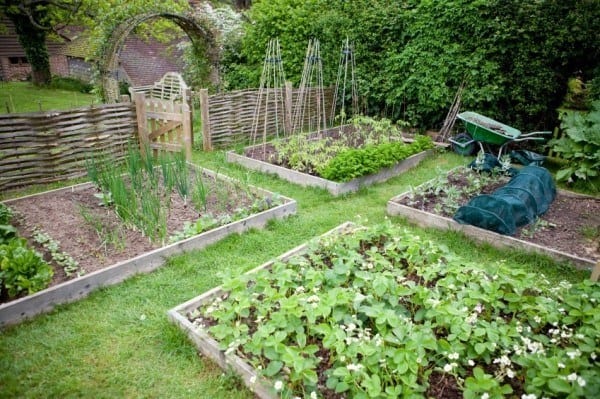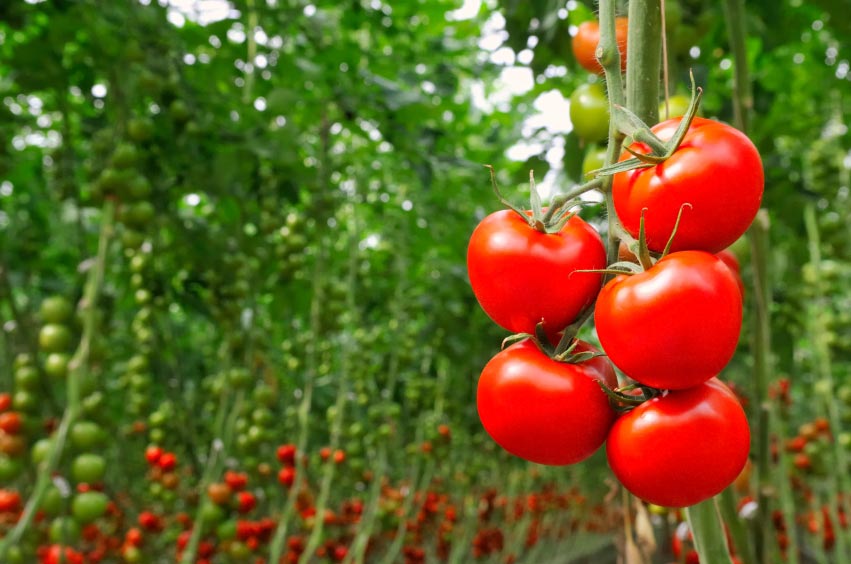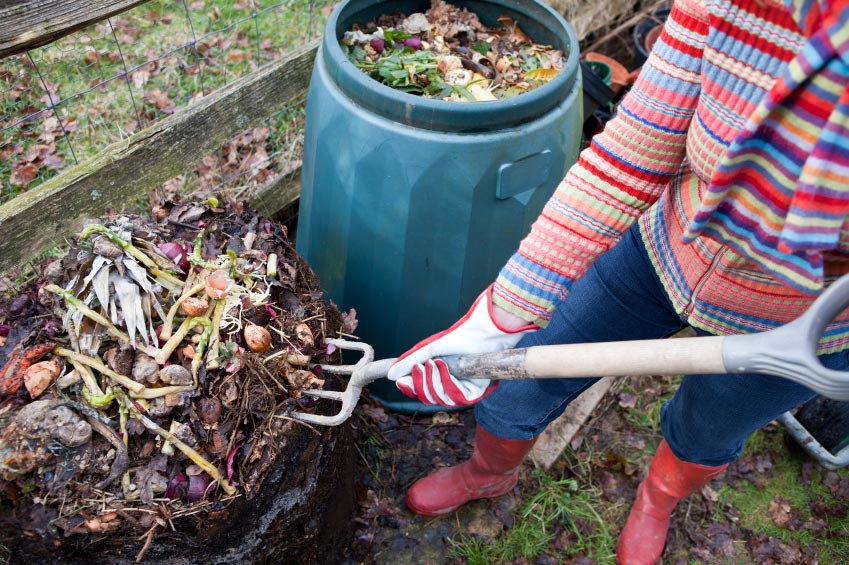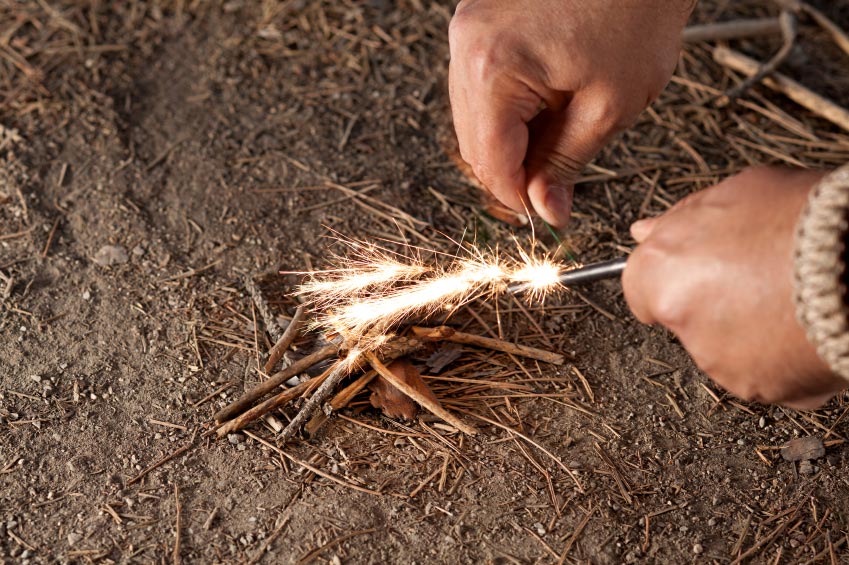
We live in an interdependent world. Although at one time all of humankind lived independently and self-sufficiently, group cooperation allowed for more efficient use of resources when hunting and gathering, raising young, making clothing and tools, and building shelters. Banding together ensured our long-term survival; dividing labor into specialized tasks has helped sculpt today’s modern, globalized society.
Because of specialization, we enjoy a high quality of life. Yet being a small cog in the greater machine means we are often disconnected from – and unaware of – the processes that go into fulfilling our most basic needs.
Becoming more self-sufficient means you’ll develop practical skills that will surely serve you well throughout your lifetime. When you learn how to do things yourself, you’ll outsource less which will save you money. You’ll also be better equipped to handle life’s emergencies. And, above all else, self-reliance is empowering and personally rewarding.
Grow Your Own Food

Fruit & Vegetable Gardening – Green thumbs are made, not born, and anyone can learn how to grow a backyard cornucopia of fresh, organic produce.
Indoor Growing – Not having access to an outdoor space doesn’t mean you can’t enjoy a homegrown supply of fruits and vegetables – even in the midst of winter.
Kitchen Herb Garden – Easy and incredibly low-maintenance, herbs can be grown year-round indoors with as little as four hours of sunlight per day.
Backyard Orchard – You don’t need a large plot of land to grow fruit and nut trees. The trick is to plant three or four varieties closely together and restrict tree height – for easier harvesting – with regular pruning.
Edible Perennials – Unlike annuals that need to be planted each and every year, edible perennials need only be sown once and will return a bountiful harvest for many years to come.
Fungiculture – The easiest way to start growing gourmet mushrooms (like shitake, oyster, portobello, and lion’s mane) is to purchase a kit. Once you get the hang of it, you can graduate to a more sustainable practice by inoculating hardwood logs with mushroom spawn.
Edible Flowers – A good source of vitamin A and C, potassium, and other minerals, culinary flowers are used in salads and desserts, as a flavoring for teas and wines, and can punch up the taste of homemade marinades and dressings.
Permaculture Techniques

Seed Saving – Harvesting and storing seeds from your existing plants is a fundamental step toward cultivating a self-sustaining garden.
Composting 101 – You’ll need a steady supply of fertile soil with all this growing going on and the best way to produce life-giving humus (and recycle food and yard waste at the same time) is to start composting.
Make Mulch – Adding a layer of organic mulch around your garden beds helps the soil retain moisture, prevents weeds from growing, adds nutrients to the earth, and regulates ground temperature. Make your own mulch by collecting leaves, grass clippings, straw, wood chips, bark, and pine needles.
Build a Rain Barrel – Free of salts, minerals, chlorine, and other chemicals, rainwater is naturally soft and is a gratis resource that can be used to satisfy your garden and landscape irrigation needs.
Natural Fertilizers – There’s really no need to purchase fertilizers when organic soil amendments –eggshells, coffee grounds, wood ash, and vinegar – can be sourced around the home.
Build a Greenhouse – Extend the length of the growing season by building your own greenhouse for less than $500.
Attract Beneficial Insects – Stop using pesticides. Instead, make your yard an enticing hunting ground for predatory insects. These bugs will be more than content to feast upon the ones gobbling up the fruits of your labor.
Companion Planting – Maximize garden efficiency (and flavor) by pairing up friendly plants, while keeping their foes far, far away.
Animal Husbandry & Beekeeping

Raising Chickens – A six-part guide on the basics of chicken rearing for egg production, from building a backyard coop, choosing breeds, and daily hen care and site upkeep. If you wish to learn how to humanely raise free-range chickens for poultry, see this site.
Raising Goats – Curious and intelligent, goats make great companions and are less expensive to farm than larger cattle. Dairy goats are a source of nutritious milk, which can be used to make goat cheese and yogurt. Angora and Cashmere goats can be sheared once or twice per year for their soft and warm fleece fibers.
Raising Sheep – Like goats, sheep can be raised for milk, wool, or meat.
Raising Alpacas – These docile creatures are easy to care for and are prized for their soft, durable, and warmer-than-wool fleece. One alpaca can produce around 10 pounds of fiber every year.
Aquaculture – Raising fish for food can be accomplished in a small pond, pool, or tank.
Beekeeping – Not only will an apiary provide fresh honey and beeswax, but there’s also the added incentive of helping save the bees.
Homesteading

Water Bath Canning – When you grow your own produce, you’ll want to make sure nothing goes to waste. For high-acid fruits and some vegetables, use this water bath method.
Pressure Canning – To safely preserve low-acid foods like meat, fish, soups, and stocks, pressure canning will ensure bacteria won’t spoil your food.
Freezing Foods – Not all foods take well to freezing, but of the kinds that do, freezing will extend the shelf-life of foods while locking in flavor and nutrients.
Dehydrate Foods – Drying foods at home is yet another technique that allows food to be stored safely for about a year.
Homemade Wine – Three DIY recipes (strawberry, elderberry, and dandelion) to get you started on home winemaking, sans kit.
DIY Home Repairs – Start small with these tips on simple fixes for common homeowner predicaments. When you’re ready for more advanced techniques, read some books or take a course to really hone those home maintenance and repair skills.
Auto Maintenance – From simple to more complex procedures, these guides offer step-by-step instructions (and videos) on how to transform your clunker into a finely tuned machine.
Sewing – This four-part tutorial is a great introduction to the world of sewing, whether you want to simply mend and tailor the clothing you own – or design your own fashions.
Knitting – Therapeutic and eminently practical, knitting isn’t just for grannies. Discover the ancient art of knitting to craft a wide range of clothing and home accessories.
Crocheting – Although it’s just as addictive as knitting, crochet often produces heavier fabrics in a quicker turnaround time.
Hand-Spinning Yarn – If you raise sheep, goats, or alpaca and practice the yarn arts, learning how to hand-spin these fibers will be so very useful.
From Scratch – Free yourself from the high cost of ready-made convenience products by making your own pantry foods, personal hygiene items, cosmetics, and cleaning supplies from scratch.
Natural Remedies – Cure what ails you by acquainting yourself with natural home remedies before heading to the pharmacy.
Use and Reuse – Just say no to throwaway culture by making the things that you need out of items you already have on hand.
Earn Passive Income – We know that the world economy can be a fickle beast, and so adding another source of income to your existing one will help you enjoy more financial independence.
Off the Grid

Solar Electric – Reduce – or eliminate energy costs entirely – by installing a solar array.
Wind Electric – On its own, or in conjunction with a solar energy setup, wind turbines are efficient and cost-effective.
Hydropower – If your property has a source of water flowing through it, setting up a micro hydropower system is another option for clean, renewable energy.
Rainwater Harvesting System – Rainwater can be stored, filtered, and sanitized to supply clean and potable water for faucets, showers, and dishwashers.
Recycle Greywater – Washing water literally goes down the drain, but it can be rerouted and reused to water lawns and gardens.
Composting Toilet – So much clean water is wasted on flushing toilets (nearly 8,000 gallons per person annually), but dry composting toilets are an alternative that will produce “humanure” for non-edible landscaping.
Build a Sustainable Home – Designing an earth-friendly autonomous home isn’t as complex or cost prohibitive as you might think.
Essential Life Skills

Basic First Aid & CPR – Everyone (and I mean everyone!) should know how to perform basic first aid procedures.
Water Purification – Humans can survive only three days without water, which makes knowing how to source and treat water a critical life skill.
Fire Building – From fuel types, layering, lighting, and campfire cooking, this site covers the basics for building and maintaining a roaring blaze.
Learn How to Cook (and Cook Well) – Everybody needs to eat! If you’re dining out most of the time, you’ll save a bundle – and eat much healthier – with home cooked meals.
Learn to Swim – Every day, 10 people drown in non-boating incidents in the United States. These seven tips should help the uninitiated take the plunge.
Be Frugal – The pressure to keep up with the Joneses is fiscally, environmentally, and emotionally exhausting. Being more frugal means freeing yourself from conspicuous consumption – and not giving a dang about what others may think.
Self-Defense Moves – The hope is that you’ll never need to defend yourself against an attacker, but if that day does come, you’ll be glad you know some moves.
